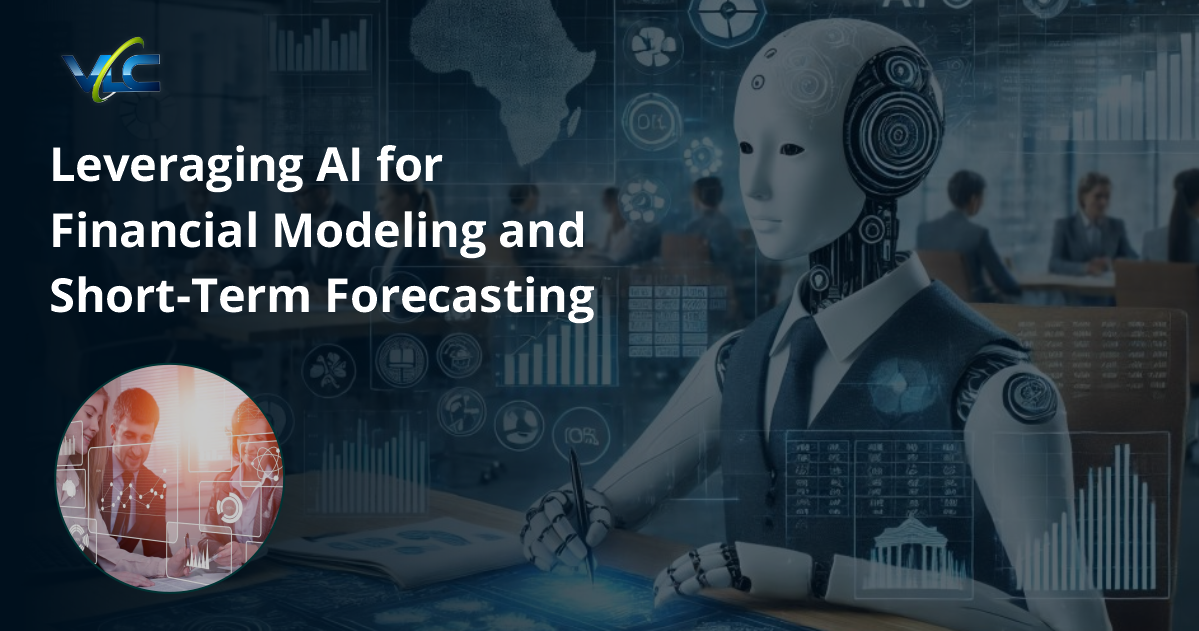Leveraging AI for Financial Modeling and Short-Term Forecasting
Time is of extreme value in today’s dynamic financial environment, which creates stressful demands for accurate modeling and forecasting. Artificial Intelligence (AI) has begun to give organizations the means to perform these tasks quickly and accurately. This blog looks into how AI can be adopted for financial modeling and forecasting, a topic that revolutionizes traditional operations and benefits various companies.
Understanding Financial Modeling and Forecasting
Financial modeling is the process of preparing a company’s financial statement model. This model can be applied for different reasons, which include the decision-making process, financial reports, and valuation. It is an assessment based on the current financial position and future performance using present evidence. Forecasting, on the other hand, involves projecting future financial positions based on past information. Both these are useful tools in strategic development, financial planning, cost forecasting, and risk assessment.
Current approaches to financial modeling and forecasting are conventional and mostly involve linear regression and data analysis with input in spreadsheets. Although these techniques are useful, they are manual, and error-prone, especially when tasking involves big data sets and patterns, and can barely handle complex patterns.
Technological Advances in Financial Forecasting and Modeling
Due to these factors, AI has the potential to greatly augment financial modeling and forecasting, which relies on a different approach to analyzing large volumes of data, as well as patterns. Here’s how AI can be integrated into these processes:
Data Processing and Analysis:
Real-time data gathering and processing is clearly one of AI’s strengths since it can easily source information from different fields and update a model’s information sources. This data can then be analyzed with specific machine-learning algorithms to detect opportunity patterns that could not be found otherwise.
Improved Accuracy:
Machine learning models can learn from historical data and continuously improve their predictions. This ability to learn and adapt leads to more accurate forecasts. Techniques such as neural networks and deep learning can capture complex relationships in the data, providing insights that traditional models often miss.
Real-Time Forecasting:
AI enables real-time forecasting by continuously analyzing incoming data and updating models accordingly. This capability is particularly valuable in volatile markets where conditions can change rapidly.
Scenario Analysis:
AI can facilitate scenario analysis by quickly generating forecasts based on different assumptions. This allows businesses to evaluate the potential impact of various strategies and market conditions, aiding in more informed decision-making.
Risk Management:
AI can enhance risk management by identifying potential risks and anomalies in financial data. Predictive models can forecast potential downturns or market shifts, allowing businesses to take proactive measures to mitigate risks.
Natural Language Processing (NLP):
NLP can be used to analyze unstructured data such as news articles, financial reports, and social media. By incorporating sentiment analysis and other NLP techniques, AI can provide a more comprehensive view of market conditions and investor sentiment, enhancing the accuracy of forecasts.
Implementing AI in Financial Modeling and Forecasting
To effectively leverage AI in financial modeling and forecasting, businesses need to follow a structured approach:
Define Objectives:
Clearly define the objectives of the financial models and forecasts. Identify the key metrics and outcomes that the models should focus on.
Data Collection and Integration:
Collect data from various sources, including historical financial data, market trends, economic indicators, and unstructured data. Ensure that the data is clean, accurate, and relevant.
Choose the Right AI Tools:
Select appropriate AI tools and platforms that align with the business’s needs. There are various AI frameworks and software available, each with its strengths and use cases.
Develop and Train Models:
Develop AI models using machine learning algorithms. Train these models on historical data and validate their accuracy using test datasets. Continuously refine the models to improve their performance.
Integrate with Existing Systems:
Integrate AI models with existing financial systems and workflows. Ensure that the outputs of the AI models are accessible and actionable for decision-makers.
Monitor and Update:
Continuously monitor the performance of AI models and update them as needed. The financial landscape is dynamic, and models need to be regularly updated to reflect current conditions.
Pioneering AI in Financial Modeling and Forecasting
At VLC Solutions, we understand the transformative power of AI in financial modeling and forecasting. Our expertise in AI and machine learning enables us to provide tailored solutions that enhance the accuracy and efficiency of financial models. We help businesses leverage AI to gain deeper insights, make more informed decisions, and stay ahead of market trends.
Our approach involves collaborating closely with clients to understand their unique challenges and objectives. We then develop and implement AI-driven models that integrate seamlessly with their existing systems, ensuring a smooth transition and immediate impact. With VLC Solutions, businesses can unlock the full potential of AI, driving growth and achieving their financial goals.
